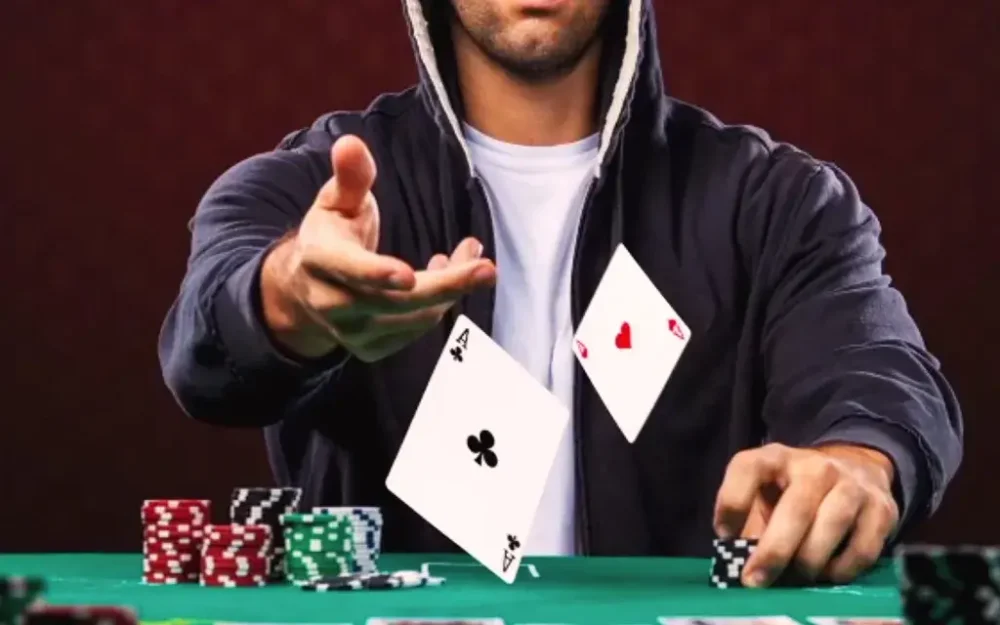Betting on ChatGPT in poker is often like trusting a calculator on a literature exam. The algorithm generates probabilities, analyzes arrays, and builds hypotheses, but it doesn’t play. In a game of chance, it’s not just about numbers; it’s about nuances. This is where the challenges arise.
Why doesn’t ChatGPT feel the table in poker?
Poker is based on incomplete information. Decisions are made in the gray area between “know” and “guess.” The neural network relies on a language model rather than a game sense. It does not read facial expressions, feel the pace, or perceive timing. There is no way to “absorb” the table, either as a visual scene or as a psychological pattern.
ChatGPT’s understanding of poker remains limited to textual information. He recognizes terms like “flush” or “button situation,” but doesn’t interpret them in a real context. However, every pro will tell you that the same cards have different meanings when your opponent’s stack is dwindling and the dealer is breathing heavily.
How ChatGPT behaves in the game
 The neural network uses statistics, but does not derive a live solution from it. In poker, she can analyze the GTO (Game Theory Optimal) strategy or explain why a bet on the river looks suspicious. In general, the AI model gives a standard answer without distinguishing who is sitting opposite.
The neural network uses statistics, but does not derive a live solution from it. In poker, she can analyze the GTO (Game Theory Optimal) strategy or explain why a bet on the river looks suspicious. In general, the AI model gives a standard answer without distinguishing who is sitting opposite.

ChatGPT performs stack calculations in poker using preset parameters, but it does not adapt to the live pace of the game. The lack of assessment of bluff, pressure, and player fatigue precludes improvisation, which is the core of modern Hold’em. Even with a full stack and an ideal position, AI tends to overestimate the probability, ignoring the rhythm, psychology, and logic of a particular hand.
ChatGPT Errors in Poker
Miscalculations occur not in the formula, but in its application. AI errors often stem from an attempt to generalize the particular. It advises a call on the river based on a typical scenario, but fails to see that the player’s three previous hands demonstrated aggression outside the position. Tactics require flexibility. The neural network does not create it; it only copies it.
Example: In a situation where the stack is 18 BB and the opponent pushes with a small blind, the neural network may recommend folding without considering the opponent’s personal data, playing style, or the dynamics of the previous hand. Even a strong strategy may fail if the context is lost.
Why does ChatGPT lose to humans in poker?
Even the most sophisticated AI model cannot replace real-life thinking when the game at the table is not based on rules, but on nerves. Here, the neural network operates according to the logic of a reference book, rather than in the spirit of true competition:
- Uncertainty. Poker does not provide complete information. The AI model does not know how to act in the absence of data, and it compensates with guesses, which are often wrong.
- Lack of adaptation. People learn from their mistakes and change their style. The neural network does not adjust its strategy after a loss.
- Ignoring psychology. The neural network does not pay attention to behavior, emotions, or expressions. It acts the same way against an aggressive player or a novice.
- Difficulties in analyzing the rhythm of the table. Tracking behavior patterns requires context. The neural network perceives each situation in isolation.
- Limited memory capacity. The AI does not store information about previous hands in the long term. The context disappears with the browser tab.
The human advantage is in the ability to notice shades, feel the shift, and capture the moment. Where ChatGPT repeats a pattern, players change the game.
Why can’t ChatGPT handle variables?
Poker makes decisions based on dynamics: the stack changes after each hand, positions change every minute, and timing is situational. A neural network, even the most advanced one, like ChatGPT, does not capture multilevel interaction. She sees a fragment, but not the whole sequence. This is critical.

AI hand analysis starts with patterns. He calculates the probabilities, but ignores the live markers — the speed of action, the habits of the opponent, the betting style. This creates a gap between the calculation and the solution. ChatGPT does not understand handouts in the true sense: it does not distinguish between when an opponent is “playing a card” and when they are playing an opponent.
Statistics without meaning
The predictions that the model builds are based on average scenarios. In real poker, something else works: a point-by-point reading of the situation. Even with similar flops, the opponent’s behavior changes. Artificial intelligence does not take this shift into account. With a 75% bet on the turn, it may recommend a push, not noticing the hidden trip.
Professional players use statistics situationally, as a tool, and not as a rule. Artificial intelligence acts the opposite way – it relies only on the number, does not feel the time. This leads to an overestimation of EV (expected profit), especially in short stacks. Therefore, even with a proper calculation, the AI stacks are miscalculated with isolated accuracy, without taking into account real pressure.
Improvement or dead end?
While neural networks continue to improve, the expectation that ChatGPT will outperform humans at the poker table remains a misconception. Even models specifically trained on GTO logic, such as PioSolver or PokerSnowie, do not guarantee success without the inclusion of human analysis.
Artificial intelligence remains a supporting tool. It does not replace gaming practice, simulate psychology, or create intuition. It describes mechanics but does not generate strategy. Strategy in real games is born from compromises, emotions, and instant risk-taking. AI processes texts without taking any risks. This is the main limitation.
Using ChatGPT in Poker: Conclusions
 Using ChatGPT in poker is acceptable for training, error analysis, or analyzing typical scenarios. However, relying on it in a game is a dead-end path. The neural network does not read players, assess rhythm, or build the drama of a game. It operates in numbers rather than emotions. It does not understand the essence; only the surface. However, this is insufficient in a live game.
Using ChatGPT in poker is acceptable for training, error analysis, or analyzing typical scenarios. However, relying on it in a game is a dead-end path. The neural network does not read players, assess rhythm, or build the drama of a game. It operates in numbers rather than emotions. It does not understand the essence; only the surface. However, this is insufficient in a live game.
 en
en  ru
ru  de
de  ar
ar  es
es  hi
hi  fr
fr  nl
nl  it
it  pt
pt  el
el 



